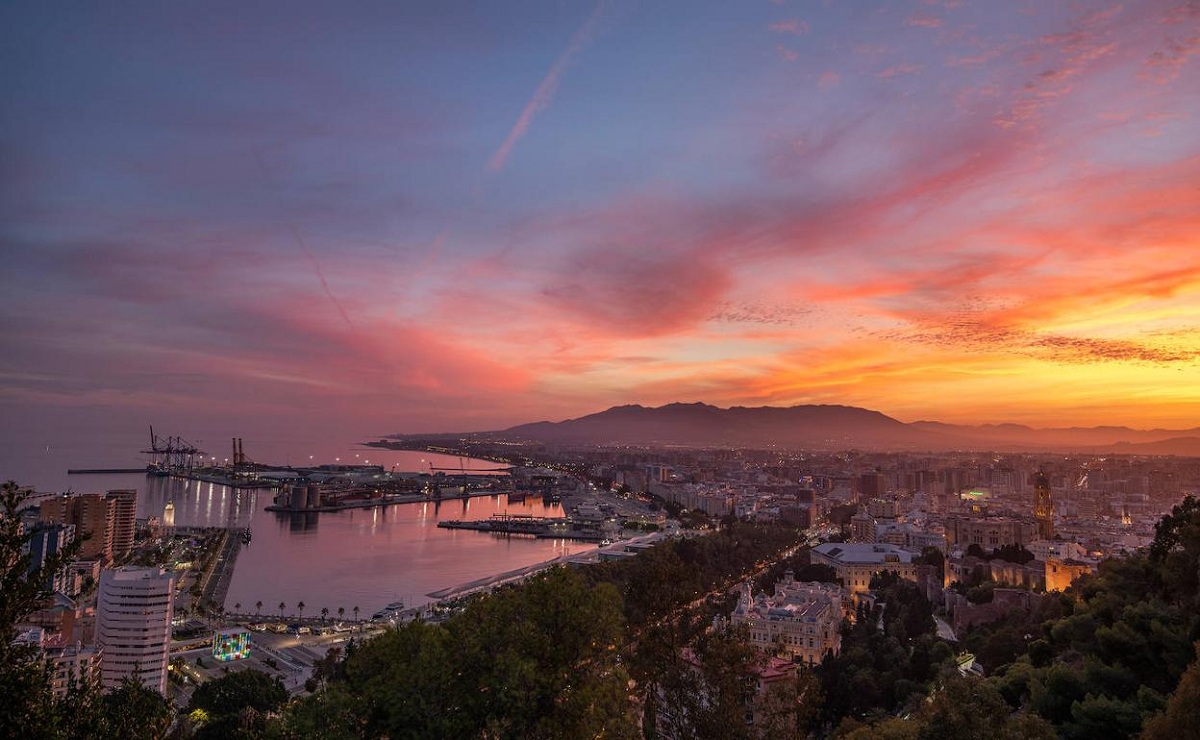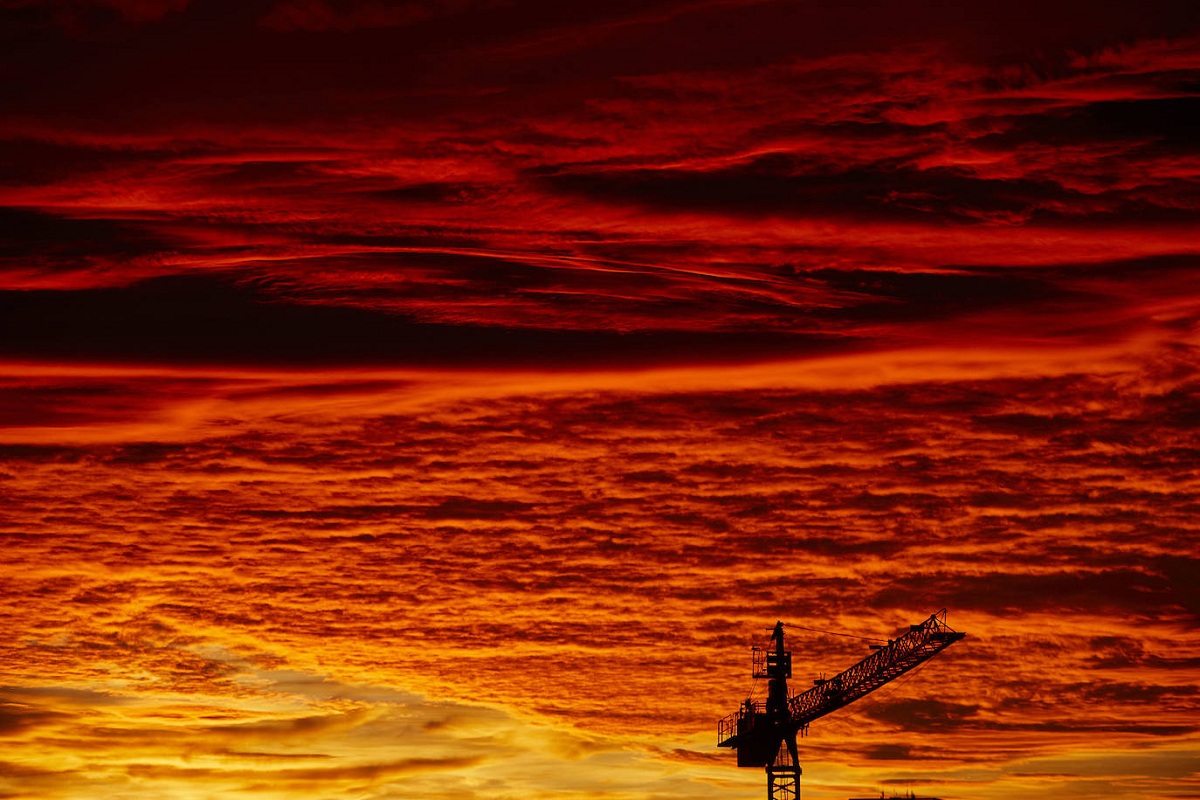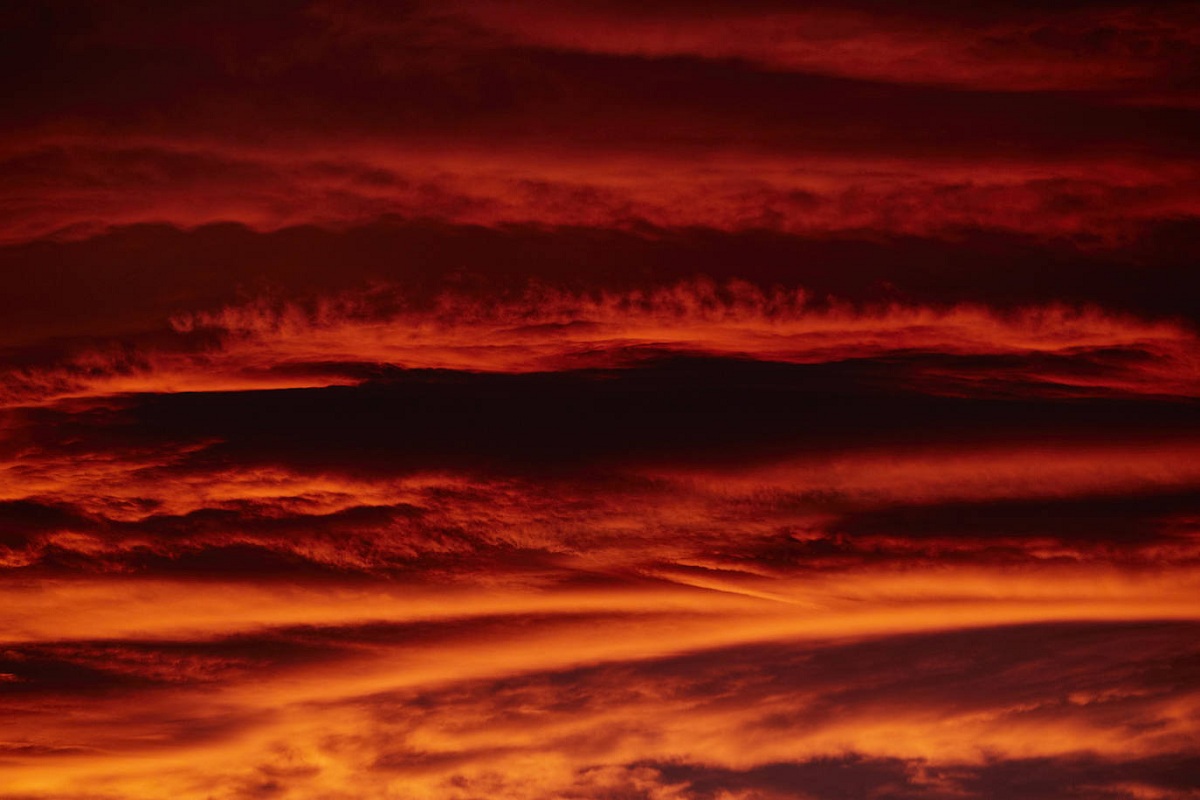
Many times the sky surprises us with wonderful views. On numerous occasions we have stopped to contemplate a fantastic sunset due to the color palette of the sky. There is a meteorological phenomenon known as footlight which is also called flushed and which is well known for being fascinating. It is a fiery sky, full of colors with shades of red, orange, pink and even purple. Heavens arrests are quite curious because sometimes you can go looking for them but you find them.
In this article we are going to tell you everything you need to know about candilazo, why it is called that and what its characteristics are.
What is the lamp
Contrary to what pop culture absorbs, it is not the dark clouds that "come," but the palette of sunlight in its full potential. But ... why don't you see them at noon? What factors will make this phenomenon shine? Let's look at the factors that most influence its development and intensity: the scattering of sunlight and its angle of incidence on the earth, the types of clouds in the sky and the amount of particles or moisture in the atmosphere.
Sunlight is made up of all the colors that belong to the "visible spectrum," and the colors we see in the rainbow are a good example. As well, all these colors are scattered more or less intensely, which mainly depends on the angle of incidence of the solar rays in our atmosphere, as shown below:
- When the sun's rays are perpendicular to the atmosphere, the higher the sun is on the horizon (solar zenith at noon), the greater the intensity and the shorter wavelength blue light (less than 500 nm) will scatter into the atmosphere. The atmosphere is more successful, flooding the sky (blue) and the clouds (white or gray) with that color.
- When the sun's rays point to the atmosphere in a "more parallel" way, what happens at dusk or dawn, the blue light will scatter later and get lost along the way. In this case, the red light will be longer. It dominates the wavelength (> 600 nm), illuminating the clouds "from below".
Cloudiness
Without clouds there would be no flashlight, as we can intuitively see at the end of the previous section. We need a canvas on which to project the red light so that we can see the light from the sky. Usually in meteorology we talk about different types of clouds according to their height in the sky: low, medium and high.
Well, to know this phenomenon, we depend on the existence of the last two: medium (foundation greater than 2000 meters) and high (foundation greater than 5000 or 6000 meters). In this case, the low clouds will not help us because they will partially or totally block the sun's rays. We need to let the light pass through the clouds below them and illuminate from the bottom of them. Sometimes even the apex of a large cumulonimbus cloud lights up.
It should be noted that some nuances of this phenomenon can change the display conditions of this phenomenon:
- High humidity absorbs part of the solar radiation, which is smoother. This usually happens when using a flashlight after it rains, especially during the rainy season.
- Pollutant particles will make the "ignition" more intense. After highly polluting anthropological activities, things that tend to happen more frequently in the afternoon.
Can it be predicted?
You must have gotten lost more than once, watching a dreamy sunset or sunrise photographed, all these clouds are illuminated by an intense red and an orange, right? The camera can turn any landscape photo into a real work of art.
But, how many times have you been surprised by a flash in the car, at home or at work? Surely many times. How many times have you gone out with your team to capture a sunrise or sunset in a beautiful place and the clouds that you thought would light up turned gray? Of course there are many others.
Therefore, the question that every landscape photographer asks himself at some point in his life is: Can you predict a flashlight? How can we know 100% that sunrise or sunset will be a show of colors? Well the simple answer to this question is that no, it cannot be predicted, at least not exactly.
But yes, there are many factors that can cause this phenomenon. Once you understand these factors, you can try to predict fantastic sunrises and sunsets and capture them with a camera at your favorite location before they happen.
In the absence of clouds, under normal circumstances, the intensity of red and orange at sunset is greater than during outings. This is because there are more airborne particles in the afternoon, as turbulent agitation during the day is greatest near the ground. that at night, more material escapes into the atmosphere that scatters the light.
Explosive volcanic eruptions emit so many particles into the stratosphere that they quickly scatter across the land, causing spectacular sunsets and sunrises, in some cases for months. These lights are reflected in the colors of the sky depicted in numerous paintings from various eras, establishing an interesting connection between painting and the weather.
The red sky is not due to the presence of particles of volcanic origin in the atmosphere, but to the result of the scattering of the evening light when the clouds block it. In many cases, the fact that these clouds are usually associated to the front proves the proverb we mentioned earlier ("Candilazo at sunset, water at sunrise").
British meteorologist Alan Watts commented: “The morning sky is a better predictor of the weather than at dusk. The sky on the eastern horizon must be clear and the clouds must be high. This happens when hot fronts or obstructions move east. Situation, so the forecast is for severe weather. Studies conducted in London in the 1920s showed that a flushed dawn was followed by rain in the next 24 hours 70 percent of the time, and that a flushed dusk was followed by dry weather just as often.
I hope that with this information you can learn more about candilazo and its characteristics.


